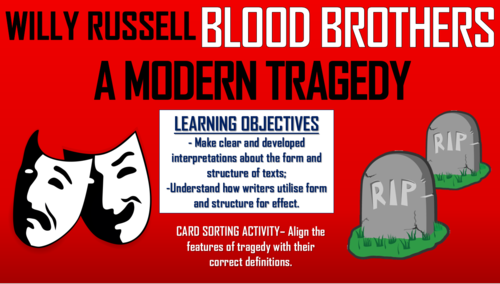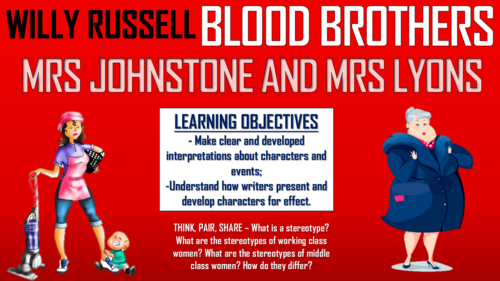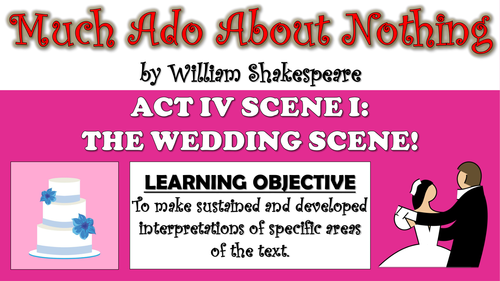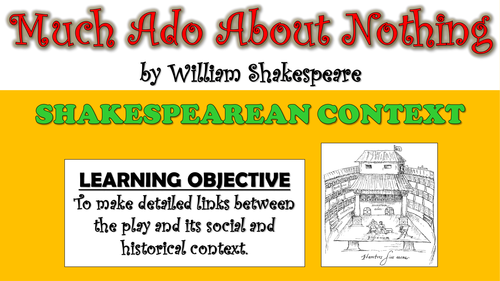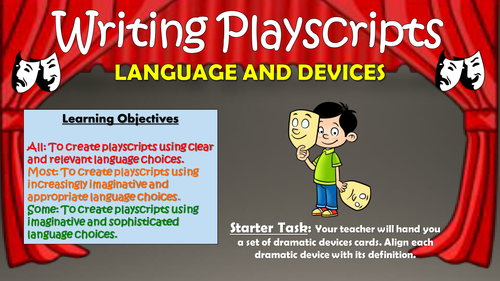
3k+Uploads
1899k+Views
2232k+Downloads
Drama
Bundle Sale

The Woman in Black Huge Bundle!
THIS HUGE RESOURCE PACK CONTAINS ALL OF THE POPULAR WOMAN IN BLACK LESSONS, AND ALSO THE WOMAN IN BLACK KNOWLEDGE ORGANISER, THE WOMAN IN BLACK COMPREHENSION BOOKLET AND THE WOMAN IN BLACK POINTLESS GAME!
This engaging, varied, and informative scheme of learning is designed to help students gain understanding, assessment skills, and key interpretations of Susan Hill’s ghost story ‘The Woman in Black.’ Made up of a wide-range of interesting and exciting lessons, students should complete this scheme having gathered vital skills in: interpreting the significant meanings of the text, understanding the writer’s ideas within the text, analysing key characters, settings, and themes, and understanding Hill’s language devices.
Stimulating, visual, and easily adaptable, these lessons provide suggested learning objectives and outcomes for students of a wide-range of abilities - The vast majority of tasks are differentiated to allow for different abilities and needs in your classroom. Each lesson loosely follows this logical learning journey to ensure that students learn in bite-size steps:
- Engaging
- Defining/ Understanding
- Identifying/Remembering
- Analysing/ Creating
- Peer or self evaluating.
All of the lessons are interactive, employ a variety of different teaching and learning methods and styles, and are visually-engaging. Resources, worksheets, and lesson plans are all provided.

Blood Brothers - A Modern Tragedy
This engaging and interesting lesson enables students to make clear and developed interpretations regarding the form and structure of Willy Russell’s Blood Brothers. In particular, students learn about the key features of tragedies, identify these in the play, and analyse their effectiveness, considering Russell’s intentions.
The lesson utilises a range of tasks, that require students to be both independent and collaborative learners. It follows this learning journey:
Defining and exemplifying each of the features of tragedies;
Inspecting the play, identifying and analysing Russell’s use of the features of tragedies throughout;
Understanding the writer’s intentions and the anticipated audience reactions through some of the features of tragedies;
Creating a mind map demonstrating the effectiveness of the features of tragedy upon the audience;
Applying their understanding of the features of tragedy in the play to a storyboarding activity;
Self-evaluating their learning in the lesson.
Included in this resource pack are:
A well-presented, thorough, and informative, whole-lesson PowerPoint presentation;
Features of tragedy cards for the card-sorting activity;
‘Text Inspector’ worksheet for the identification task;
Template for the storyboarding activity;
A comprehensive teacher guidance form/lesson plan to assist delivery.
Resources are provided in both Word (for easy editing - find in the zip file)and PDF (to prevent formatting issues between computers).
All images in this resource are licensed for commercial use, and are cited on the final slide of the lesson presentation.
Bundle Sale

A View from the Bridge Huge Bundle!
THIS BUNDLE CONTAINS ALL OF THE 'A VIEW FROM THE BRIDGE LESSONS, IN ADDITION TO THE COMPREHENSION BOOKLET, THE KNOWLEDGE ORGANISER AND THE POINTLESS GAME!
This engaging, varied, and informative scheme of learning is designed to help students gain understanding, assessment skills, and key interpretations of Arthur Miller’s play ‘A View from the Bridge.’ Made up of a wide-range of interesting and exciting lessons, students should complete this scheme having gathered vital skills in: interpreting the significant meanings of the text, understanding the writer’s ideas within the text, identifying the traits of key characters, settings, and themes, understanding dramatic and language devices, and relating the text to its social and historical context.
Stimulating, visual, and easily adaptable, these lessons provide suggested learning objectives and outcomes for students of a wide-range of abilities - The vast majority of tasks are differentiated to allow for different abilities and needs in your classroom. Each lesson loosely follows this logical learning journey to ensure that students learn in bite-size steps:
- Engaging
- Defining/ Understanding
- Identifying/Remembering
- Analysing/ Creating
- Peer or self evaluating.
All of the lessons are interactive, employ a variety of different teaching and learning methods and styles, and are visually-engaging. Resources, worksheets, and lesson plans are all provided.

The Woman in Black: Jennet Humfrye and Nathaniel Drablow!
This engaging and informative lesson enables students to make precise and sustained interpretations regarding the sub-plot of Jennet Humfrye and Nathaniel Drablow in The Woman in Black. Through close analysis of extracts of the sub-plot, they consider how the woman in black herself came to being, and learn her ghastly purpose.
The lesson follows a step-by-step learning journey, in which children learn through:
- Reading and understanding the sub-plot of Jennet Humfrye and Nathaniel Drablow;
- Understanding and comprehending the key themes and ideas raised in the sub-plot;
- Empathising and evaluating the sub-plot, arguing a viewpoint on behalf of a character;
- Analysing how Hill utilises the sub-plot to aid and develop the wider story;
- Peer assessing each other's learning attempts.
Included is:
- Whole lesson PowerPoint - colourful and comprehensive;
- Extracts from 'The Woman in Black' which details the sub-plot;
- 'Jennet Humfrye and Nathaniel Drablow' worksheet (and answer sheet for teachers);
- Empathy Footprints for 'In Your Shoes' task;
- Analysis template with success criteria for creating well-structured responses;
- Comprehensive lesson plan.
There are also opportunities for group learning, peer assessment, and whole class discussion. This was originally taught to mixed ability year 10 groups, but can easily be differentiated for groups of different ages and abilities.
All images are licensed for commercial use, and image rights are listed on the last page of the presentation.

Blood Brothers - Mrs Johnstone and Mrs Lyons!
This engaging and interesting lesson enables students to make clear and developed interpretations of the characters of Mrs Johnstone and Mrs Lyons in Willy Russell’s Blood Brothers. In particular, students infer and interpret key information about the characters from their introductions into the play, before tracking how their characters develop through close analysis of key quotations.
The lesson utilises a range of tasks, that require students to be both independent and collaborative learners. It follows this learning journey:
Considering the meaning of the key term ‘stereotype’ and how Mrs Johnstone and Mrs Lyons represent stereotypes of social groups;
Engaging with the opening to the text and interpreting how Mrs Johnstone and Mrs Lyons are presented;
Tracking how the characters are developed throughout the play, through engagement with key quotations;
Answering an essay-style question about the introduction and development of the characters;
Self-evaluating their learning in the lesson.
Included in this resource pack are:
A well-presented, thorough, and informative, whole-lesson PowerPoint presentation;
Appropriate extracts from the play;
A worksheet with key quotations to enable students to track the development of characters;
A template to help scaffold the main task, complete with quotes from the text;
A comprehensive teacher guidance form/lesson plan to assist delivery.
Resources are provided in both Word (for easy editing)and PDF (to prevent formatting issues between computers).
All images in this resource are licensed for commercial use, and are cited on the final slide of the lesson presentation.

Writing Playscripts: Interesting Subject Matter!
This stimulating and thought-provoking lesson enables students to create playscript texts containing appropriate and imaginative content choices, using knowledge of genre and narrative structure to form engaging subject matter. In particular, students learn how key features such as the setup, confrontation, and resolution, in addition to characters (such as heroes and villains) can aid the creation of original and engaging playscripts.
The lesson follows a clear, logical, bite-size learning journey, which guides students towards differentiated learning objectives. Over the course of this journey, they become able to:
- Define and exemplify the different genres of playscripts;
- Research and identify the key features of different genres;
- Gaining an in-depth understanding of the narrative structure of playscripts;
- Applying this understanding to popular playscripts, and then using this information to create their own playscripts;
- Write their own playscripts, with interesting, varied, and appropriate subject matter;
- Self/peer assess their playscript attempts.
This resource pack includes:
- A visually engaging whole-lesson PowerPoint presentation;
- A helpful and well-structured research template;
- A comprehensive planning sheet for designing their own playscripts;
- A detailed lesson plan, complete with what the teacher and students should aim to achieve at each stage of the lesson.
All images are licensed for commercial use, and are cited on the final slide of the PowerPoint.

Much Ado About Nothing - Don John
This engaging, in-depth lesson enables students to understand how plot and language are utilised to introduce and develop the character of Don John in Shakespeare’s ‘Much Ado about Nothing.’
The lesson places a particular focus upon how quotations by and about Don John, in addition to his position as an 'illegitimate' or outsider, help to clarify and develop his role as a villain. Students also critically analyse how his behaviour develops over the course of the text.
The lesson follows a step-by-step learning journey, in which students learn through:
- Taking part in a fun team quiz to secure understanding of Don Pedro;
- Understanding his role in catalysing the events of the play;
- Identifying and analysing quotations by Don Pedro to understand how his character is introduced;
- Finding quotations to show how Don Pedro is involved in the confusion and chaos of the plot events;
- Completing an essay style response in which they consider how the character of Don Pedro is introduced and developed;
- Peer assessing each other's learning attempts.
Included is:
- Whole lesson PowerPoint - colourful and detailed - just download and teach from it!
- Introduction to Don John worksheet;
- Development of Don John worksheet;
- Analysis template with success criteria for creating well-structured responses;
- Comprehensive lesson plan.
There are also opportunities for group learning, peer assessment, and whole class discussion. This was originally taught to higher ability year 9 and 10 groups, but can easily be differentiated for groups of different ages and abilities.

Much Ado About Nothing - Act IV Scene I - The Wedding Scene!
This engaging, in-depth lesson enables students to understand how the plot events in the wedding scene create a sense of climax throughout Act IV Scene I of Much Ado About Nothing. In particular, the lesson focuses upon the language used by Claudio and Leonato to denounce Hero (with links to the expectations within the social/historical context of the renaissance), the dramatic response to the allegations, and Benedick's altering priorities.
The lesson follows a step-by-step learning journey, in which students learn through:
- Identifying the key events of the plot leading up to the wedding scene.
- Reading and comprehending the predominant plot events in Act IV Scene I.
- Understanding the idea of the patriarchal family society, and considering the accusations directed at Hero in light of this.
- Completing an essay style response in which they consider how the key plot events contribute to a sense of climax within the scene.
- Peer assessing each other's learning attempts.
Included is:
- Whole lesson PowerPoint - colourful and detailed - just download and teach from it!
- Cards for card-sorting activity;
- Wedding Scene worksheet (and teacher answer sheet);
- Analysis template with success criteria for creating well-structured responses;
- Comprehensive lesson plan.

Much Ado About Nothing - Shakespeare's Dramatic Devices!
This engaging, in-depth lesson enables students to understand how Shakespeare uses a range of dramatic devices for effect within ‘Much Ado about Nothing.’ In particular, the lesson focuses upon the dramatic irony and tension used to build the themes of confusion and deception. A close analysis of Act II Scene I: The Masquerade Ball, is included, to exemplify the impact of the dramatic devices upon Shakespearean audiences.
The lesson follows a step-by-step learning journey, in which students learn through:
- Defining and exemplifying the key dramatic devices;
- Relating key dramatic devices to the themes of confusion and deception;
- Reading and comprehending the predominant plot events in Act II Scene I.
- Completing an essay style response in which they consider how dramatic devices help to create Shakespeare's intended effects upon audiences.
- Peer assessing each other's learning attempts.
Included is:
- Whole lesson PowerPoint - colourful and detailed - just download and teach from it!
- Cards for card-sorting activity;
- Confusion and Deception worksheet (and teacher answer sheet);
- Act II Scene I analysis sheet
- Analysis template with success criteria for creating well-structured responses;
- Comprehensive lesson plan.

Much Ado About Nothing - Shakespearean Context!
This engaging, in-depth lesson enables students to make detailed links between Much Ado About Nothing and its social and historical context. In particular, students analyse how social features such as courtly love, patriarchal society, social class, and illegitimacy are evidence throughout the play.
The lesson follows a step-by-step learning journey, in which students learn through:
- Defining and exemplifying the key features of Shakespearean context;
- Reading and comprehending key extracts from Much Ado About Nothing, relating them to the features of Shakespearean context;
- Completing an essay style response in which they consider how the key features of social and historical context influence the events of the play.
- Peer assessing each other's learning attempts.
Included is:
- Whole lesson PowerPoint - colourful and detailed - just download and teach from it!
- Pictures of Shakespearean society for the introduction activity;
- Shakespearean society worksheet (and teacher answer sheet);
- Extracts from the text;
- Analysis template with success criteria for creating well-structured responses;
- Comprehensive lesson plan.

Writing Playscripts: Language and Devices!
This stimulating and thought-provoking lesson enables students to create playscript texts containing varied and imaginative dramatic language and devices, using techniques appropriately to engage audiences. In particular, students learn how key features such as dramatic irony, dramatic tension, pauses, hesitations, and stage directions can aid the creation of original and engaging playscripts.
The lesson follows a clear, logical, bite-size learning journey, which guides students towards differentiated learning objectives. Over the course of this journey, they become able to:
- Define and exemplify the key language devices of playscripts;
- Identify the key features within an extract of an existing playscript, commenting upon effect;
- Gaining an in-depth understanding of the application of some of the more complicated language features;
- Completing short, fun, application tasks to check their understanding;
- Write their own playscripts, with accurate language and devices;
- Self/Peer assess their playscript attempts.
This resource pack includes:
- A visually engaging whole-lesson PowerPoint presentation;
- An engaging and appropriate playscript extract to learn from;
- Cards for the card-sorting task;
- An analysis worksheet;
- A detailed lesson plan, complete with what the teacher and students should aim to achieve at each stage of the lesson.
All images are licensed for commercial use, and are cited on the final slide of the PowerPoint.
Bundle Sale

Blood Brothers Lesson Bundle!
This engaging, varied, and informative scheme of learning is designed to help students gain understanding, assessment skills, and key interpretations of Willy Russell’s play ‘Blood Brothers.’ Made up of a wide-range of interesting and exciting lessons, students should complete this scheme having gathered vital skills in: interpreting the significant meanings of the text, understanding the writer’s ideas within the text, identifying the traits of key characters, settings, and themes, understanding dramatic and language devices, and relating the text to its social and historical context.
Stimulating, visual, and easily adaptable, these lessons provide suggested learning objectives and outcomes for students of a wide-range of abilities - The vast majority of tasks are differentiated to allow for different abilities and needs in your classroom. Each lesson loosely follows this logical learning journey to ensure that students learn in bite-size steps:
Engaging
Defining/ Understanding
Identifying/Remembering
Analysing/ Creating
Peer or self evaluating.
All of the lessons are interactive, employ a variety of different teaching and learning methods and styles, and are visually-engaging. Resources, worksheets, and lesson plans are all provided.
Bundle Sale

Much Ado About Nothing: Lesson Bundle! (All Lessons, Resources, Plans, Everything!)
This engaging, varied, and informative scheme of learning is designed to help students gain understanding, assessment skills, and key interpretations of William Shakespeare’s tragedy ‘Much Ado About Nothing.’ Made up of a wide-range of interesting and exciting lessons, students should complete this scheme having gathered vital skills in: interpreting the significant meanings of the text, understanding the writer’s ideas within the text, identifying the traits of key characters, settings, and themes, understanding dramatic and language devices, and relating the text to its social and historical context.
Stimulating, visual, and easily adaptable, these lessons provide suggested learning objectives and outcomes for students of a wide-range of abilities - The vast majority of tasks are differentiated to allow for different abilities and needs in your classroom. Each lesson loosely follows this logical learning journey to ensure that students learn in bite-size steps:
- Engaging
- Defining/ Understanding
- Identifying/Remembering
- Analysing/ Creating
- Peer or self evaluating.
All of the lessons are interactive, employ a variety of different teaching and learning methods and styles, and are visually-engaging. Resources, worksheets, and lesson plans are all provided.
Bundle Sale

Much Ado About Nothing Big Bundle! (All Lessons, Resources, Plans, Everything!)
THIS BUNDLE CONTAINS ALL OF THE ‘MUCH ADO ABOUT NOTHING’ LESSONS, PLUS THE COMPREHENSION BOOKLETS (for both KS3 and KS4) AND THE POINTLESS GAME!
This engaging, varied, and informative scheme of learning is designed to help students gain understanding, assessment skills, and key interpretations of William Shakespeare’s tragedy ‘Much Ado About Nothing.’ Made up of a wide-range of interesting and exciting lessons, students should complete this scheme having gathered vital skills in: interpreting the significant meanings of the text, understanding the writer’s ideas within the text, identifying the traits of key characters, settings, and themes, understanding dramatic and language devices, and relating the text to its social and historical context.
Stimulating, visual, and easily adaptable, these lessons provide suggested learning objectives and outcomes for students of a wide-range of abilities - The vast majority of tasks are differentiated to allow for different abilities and needs in your classroom. Each lesson loosely follows this logical learning journey to ensure that students learn in bite-size steps:
- Engaging
- Defining/ Understanding
- Identifying/Remembering
- Analysing/ Creating
- Peer or self evaluating.
All of the lessons are interactive, employ a variety of different teaching and learning methods and styles, and are visually-engaging. Resources, worksheets, and lesson plans are all provided. There is a 20 page comprehension booklet, and also a fun ‘Pointless’ Game included, to enhance your students’ knowledge of the text!
Bundle Sale

Writing Playscripts Lesson Bundle!
These engaging and detailed resources have been designed to make the writing of playscripts exciting, interesting, and easily accessible for all children. Throughout each lesson, students consider a different element of their writing (content, language, and structure) in order to produce imaginative and appropriate playscripts. Each lesson contains a comprehensive whole lesson PowerPoint, all the resources that you will need, and a detailed lesson plan.
Included are the following lessons:
1. Writing Playscripts: Interesting Subject Matter
2. Writing Playscripts: Language and Devices
3. Writing Playscripts: Structure and Organisation
All images are licensed for commercial use, and are cited on the final slide of the PowerPoint/ the bottom of worksheets.


